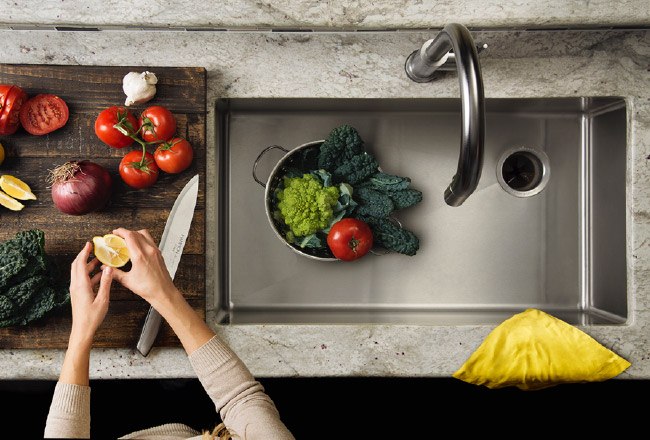Choosing a sink for kitchen, laundry or bar installations can be overwhelming with the array of choices in today’s marketplace. This blog provides an overview of different sink materials with a focus on how the style, functionality and material durability of the sink should stand up to whatever life dishes out.
Quartz
From traditional to modern styling, and colors to match any décor, quartz is a versatile material. These durable sinks can take on the toughest household tasks and look great doing it. Here are a few items to think about when shopping for a quartz sink:
- Durability
This is determined by the manufacturing process and the components used. Look for a quartz sink that is scratch and chip resistant, as well as heat proof. - Color
Quartz sinks offer color options that match or complement your décor – from muted, natural hues to rich, bold tones that make a statement. - Noise
level
The thick material of quartz absorbs noise when working at the sink. This makes quartz a great, naturally quiet choice for busy kitchens where meals are made and cleaned up.
Stainless Steel
Stainless steel is a timeless favorite for American homes. Some stainless-steel finishes are even repairable. Why stainless? Consider the below:
- Virtually endless options
Stainless steel can be formed into any shape or size. Corners can vary from zero radius, for a geometric look, to rounded, for a traditional style. - Gauge
Stainless sinks come in different gauges to suit application and budget needs. The typical gauge range is from 14 to 22. Gauge is the thickness of the steel, the lower the number, the thicker the material. Steel thickness impacts strength, denting and vibration. - Recyclability
Many stainless-steel stinks are recyclable. Recycling reduces the amount of waste going to landfills.





